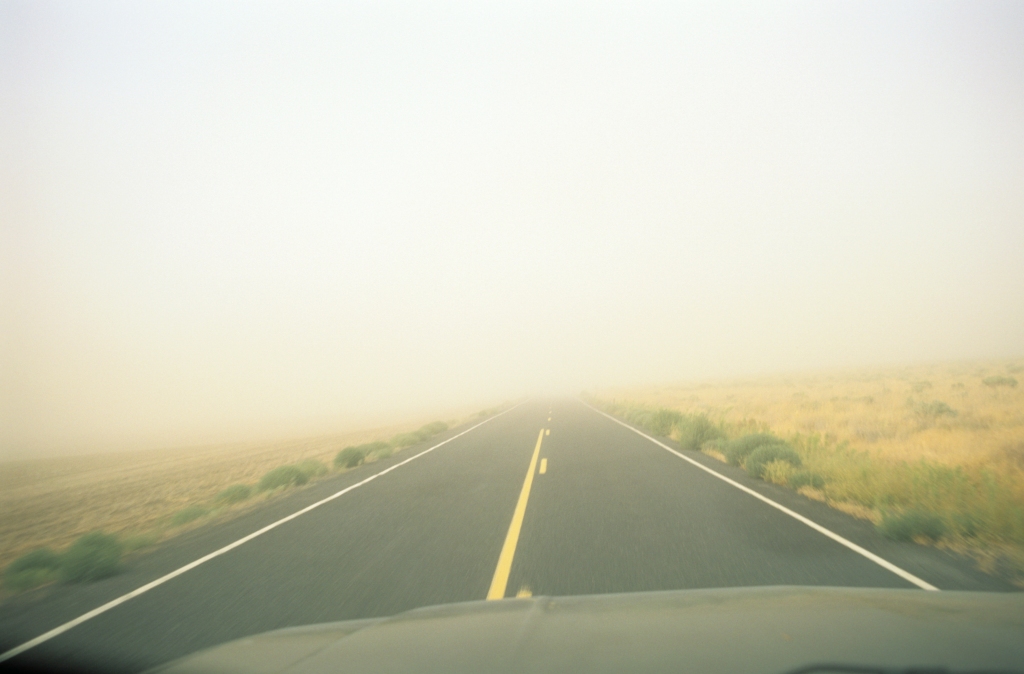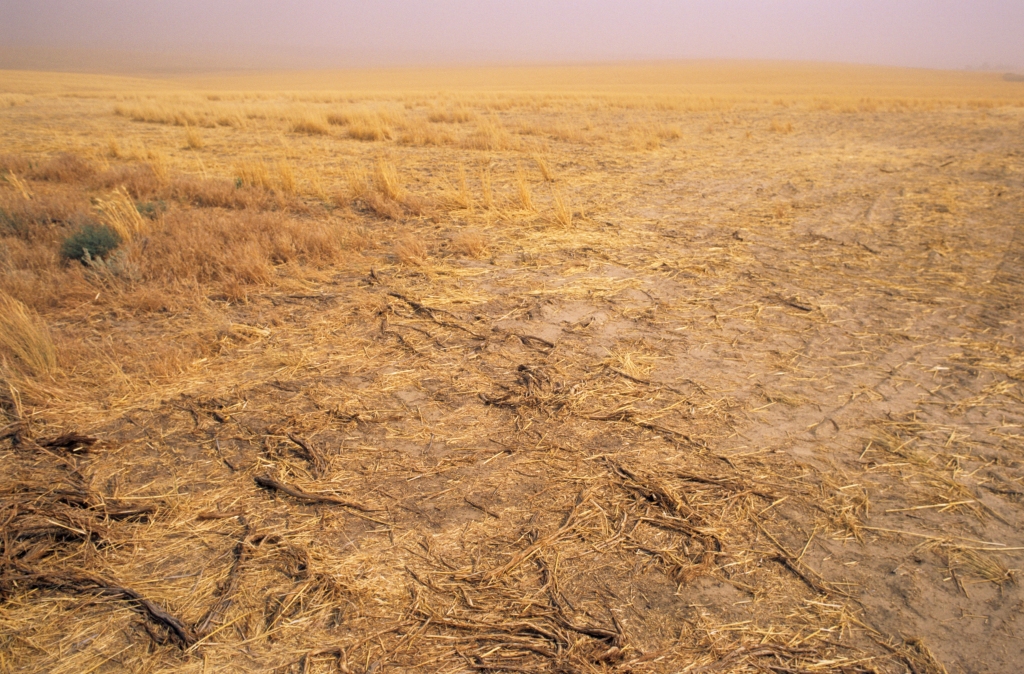
The Exhibit
Sixteen Hours is a collection of anecdotes from a single day’s journey through a dust storm, wildfires, and numerous detours into unexpected spaces in the northwestern United States. This particular installation features a gallery of twenty-five prints, custom framed behind museum glass, alongside a simultaneous presentation of a short film featuring an ambient score composed by Latlaus Sky—aka, my very good friends, Brett and Abby Larson. This show has definitely been a long time coming, and though it has been detoured and derailed by a pandemic, venues being boarded-up due to constant rioting and looting downtown, and numerous other obstacles, it has come out the other side bigger, better, and stronger than before.
The Film
The short film Sixteen Hours is available to view on YouTube in 4K resolution. Runtime is 13 mins 33 secs. I recommend an immersive viewing experience with the lights off + good headphones or a projector/home theatre setup if you have one. Enjoy 🙂
The Backstory
In August of 2015, I embarked on a road trip to Whitefish, Montana. What was supposed to be just shy of a ten-hour drive quickly turned into an adventure like I never could’ve imagined. I suppose I should have guessed that something was on the horizon when I passed through the Tri-Cities and it was 100° with the wind blowing 70-80 MPH. It wasn’t until about 45 minutes up Interstate 395 that I ran into my first trouble with a whiteout dustbowl and a concurrent sixty-car pileup. After sitting at a standstill for roughly an hour with no sign of the dust relenting or when the paramedics/highway crews would open the freeway again, I decided to use the 4WD and see if I could make it over the median, through desert plants and rubble, to the southbound lanes and find a detour.
After a successful transverse, I began south and then embarked east on a winding mountainous pass only to discover within a few minutes that the road ahead had just been closed due to a wildfire. Fed up, I drove back to I395 to return to the Tri-Cities and take a super-long route through Oregon or Central Washington only to then find that I395 southbound was now shut down due to an additional wildfire that had spread across the freeway in the hour that I’d been stuck in the northbound lineup. The only way out of this trap was to take a westward two-lane backroad through the truly middle-of-nowhere town of Lind, Washington. While driving through, I did not see a single person or car (even parked) anywhere. If I recall, I actually saw tumbleweeds in the streets. It was as much of a “modern” ghost town, where it appeared that the ghosts were alive, well and maintaining pretty decent care of the buildings, as I could’ve ever imagined.
At this point, with the backdrop of a shapeshifting cataclysm of yellow, silver, green, orange, and purple skies, I knew I’d found myself amidst one of the most fascinating and ethereal moments of my life. I’d taken a handful of photographs up to this point, but as I continued out of Lind and into the countryside I found myself continually barreling down the road only to slam on the breaks and swerve off to the side, time after time, to take a once-in-a-lifetime photograph or to avoid a semi-truck suddenly emerging out of a solid two-hundred-foot wall of dust.

As was my habit at the time, I never drove anywhere without a 35mm Minolta SLR, and a Holga 120N in the console of my car. As was my luck this day, I had a large stock of a particular color slide film that, both in retrospect and in the moment, I felt could not have been more perfectly suited for replicating the hues, motion, and sheer drama playing out before my eyes.At a certain point as a film photographer, you begin to see the world around you in real time as it would appear represented by various film stocks. It’s almost like having a set of glasses that you could press a button and switch between viewing the same scene in different color palettes and/or different contrast gradations—only better yet since this “visionary gift” predominately resides in your imagination, intertwined with the most deeply emotive parts of your being. As Sixteen Hours began to unfold, before I even thought to reach for my camera bag, I was seeing the entire world around me in Fuji Velvia 50 slide film. It was pretty spectacular knowing right then and there that whatever I photographed, so long as the camera did not malfunction and the film was transported and developed properly, would render the greatest artistic recreation I could fathom short of something like an Andrew Wyeth egg-tempura painting.
While that may sound ostentatious, it actually was one of the most humbling experiences of my life. To have such a scenario fall into your lap seemingly as if the whole thing had been orchestrated ahead of time, specifically for you to be there “unexpectedly” at that particular place in time, unavoidably leaves you in a state of continual gratitude and wonder.
Also, while the initial impression of and consequent conviction to render a scene may be very similar for painters, poets, and photographers, the instantaneous thrill of clicking a camera shutter, and knowing that your recreation is essentially complete after 1/125th of a second, is a joy truly unique to photography.* It was a joy that on that day compounded every other sensation to the point at which I knew, particularly as I snapped the shot of the roots (below), that I was going to make a film that put these photographs to some sort of ambient score.
*…and particularly to film photography since it rarely involves even a fraction of the Photoshop work required of digital photography.

Initially, I put the project on the back burner until some later date when I would inevitably fire up my Oberheim OB8 synthesizer and stare at these photographs until I could generate an appropriate acoustic accompaniment.
Years went by and I never managed to provide myself the time to do that. The list of artistic to-dos got longer and longer and the prospect of completing this project seemed to get further and further away. That was, until one day in 2019 when I was working on a completely different project and hadn’t even thought about the Sixteen Hours photographs in months, when they suddenly began to appear out of nowhere within the nonthinking space at the back of my brain concurrently ringing with the sounds of Latlaus Sky’s Something Like Glass [EP] playing off of my Nakamichi cassette deck.
The next day, I took the outputs from the cassette deck and captured the record exactly as I’d heard it using a mastering-level audio converter. I then proceeded to edit the film within just a few hours.
What had started as a ten-hour road trip, that became an epic sixteen-hour aesthetic adventure, and thereafter sat untouched on a shelf for four years, had now been re-conceptualized and completed in just twenty-four hours. Once again, I was found in a place of complete humility.
Epilogue
There are so many stories to tell from that day that I could never even begin to scratch the surface here. If you are interested in knowing what was happening where/when in a particular photograph, I’d be overjoyed to tell you. However, despite the fact that I have given these photographs a specific order (and timing in the film), this show is otherwise not meant to follow a particular script. The narrative is up to the individual renderings of your imagination. After all, the beauty of art lies in its infinite subjectivity.
Lots of love,
-Alec
